Tuesday 5 July 3.00 pm

Presentation of Award by Critics’ Circle to St Mary’s Perivale
‘Lockdown Star Venue’
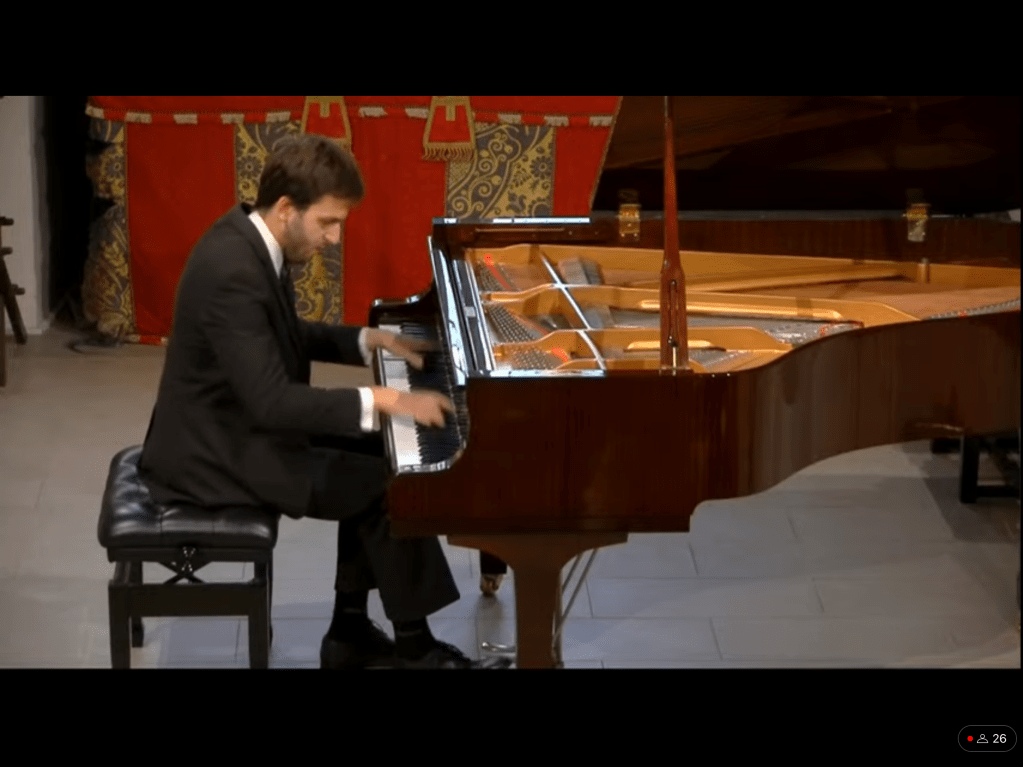
‘Lockdown stars’ as Robert Fitness of the critics circle described the Mecca for young musicians that has been created by an extraordinary team of passionate ‘amateurs’ in a small redundant church on Ealing Golf Course.
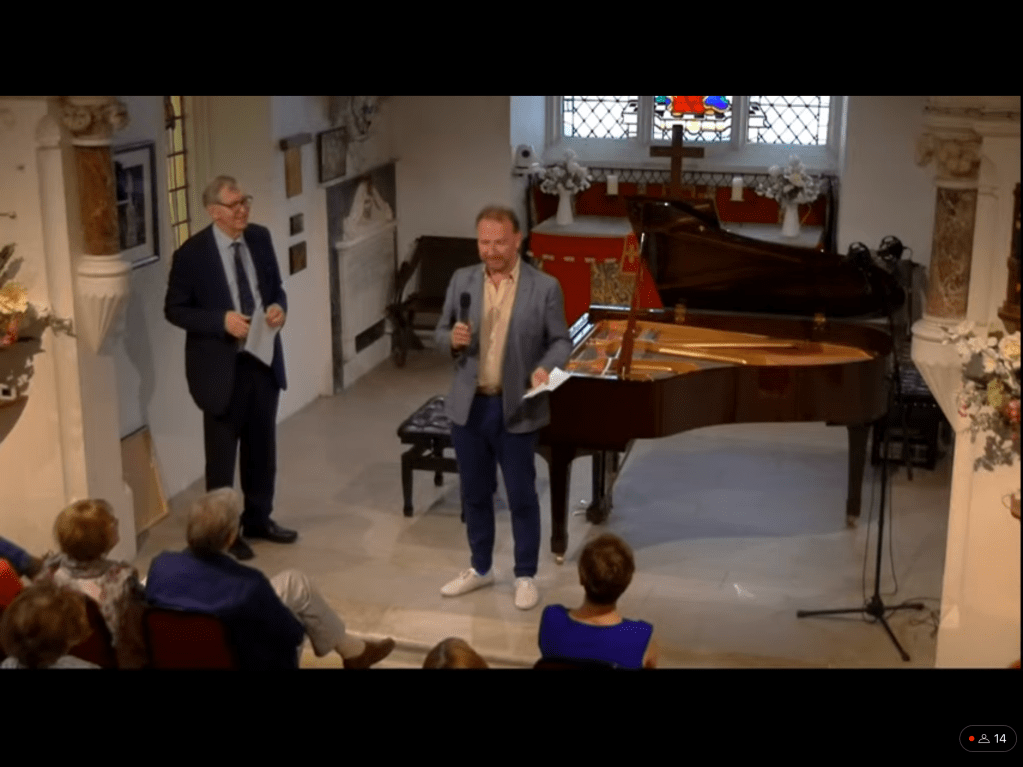
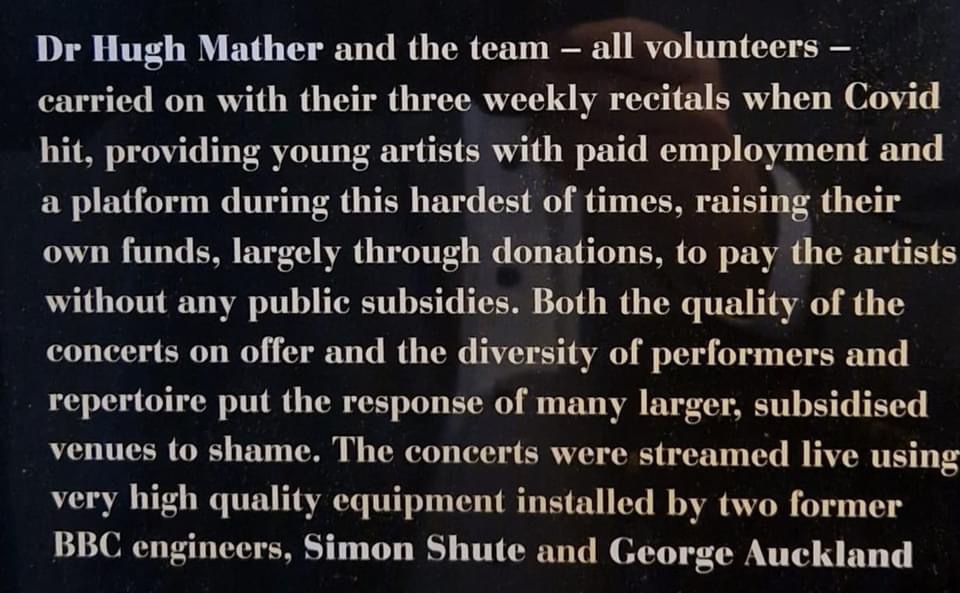
But as Rosalyn Tureck once said to my wife:it is a great satisfaction to have one’s work recognised but it is the work that counts!

Damir Durmanovic was the living proof of that today giving a recital of such musicianship and artistry that I was reminded of the unique sounds that Moiseiwitch would coax out of the piano with his ravishing sense of balance and aristocratically natural musicianship.
Sounds from the piano that Matthay had shared with Myra Hess and Moura Lympany where every note has an infinite variety of beautiful sounds that can as if by magic turn a box of hammers and strings into a wondrous world of fantasy and sumptuous delight.
Damir has much in common with them too with his natural musicianship that has been nurtured from his youthful studies with Marcel Baudet and Robert Levin at that remarkable school that Menuhin has bequeathed to his adopted country.
Programmes that are constructed with key relationships in mind.
Repertoire chosen from a vast range of neglected masterpieces.
A true musician who can improvise and modulate as was the norm in Bach’s day but has now become a rarity.
I am not sure if the public were aware of the improvised link between the rare pieces by Lyadov and the Rachmaninov Preludes
Dr Hugh Mather sounded perplexed as to why Damir should play the well known Rachmaninov preludes in a seemingly arbitrary order.
Damir simply explained that the preludes had never been written by Rachmaninov with the idea to be played all together and so he had tried to link them by key relationships to make a more satisfying whole.
Well Damir is part of the school of Andras Schiff,Paul Baudura Skoda and Robert Levin with their extraordinary curiosity that comes from deep research together with the natural musicianship like the ‘kapellmeisters’ of a bygone age.

Schumann composed the Intermezzi Op. 4 in Spring 1832 and declared that they were special works, conceived as “longer Papillons” where “every note ought to be weighed and balanced”. The Intermezzi employ the same techniques used in Op. 2: quotations, fragments, and metamorphoses of poetry into music.The scherzo-like No. 2 in E minor is a depiction of Faust’s and Mephistopheles’ journey through the air; there is much interest in the complex rhythms that throw the underlying pulse out of sync with the melodic and harmonic rhythm. Unusual rhythms and accentuation highlight the main section of No. 3 in A minor; Schumann curiously labels the faster central section “Alternativo.” Schumann constructed No. 4 in C major, the shortest of the Intermezzi, from fragments of three earlier discarded works. No. 5 in D minor is more lyrical than its partners, in spite of its fast tempo; the central section, labeled “Alternativo” as in No. 3 above, is probably the most beautiful passage in the entire set. It was exactly the contrast of quixotic and romantic that was so fascinating.Damir has a way of coaxing the sounds out of the piano like a painter with strokes on the canvas which adds such a sumptuous sense of colour and balance to these flights of fancy.There are moments when the clouds seem to clear and we catch a glimpse of the sublime melodic line that is to become ever more evident in the works that are to follow on closely.From op 6 Davidsbundler through the extraordinary technical hurdles and romantic outpourings of the Toccata op 7 to the Carnaval op 9.These are like a painter trying out his ideas before arriving at the final masterpiece.Damir gave a very convincing performance that makes one want to hear the entire set of six as Schumann intended them to be heard together.
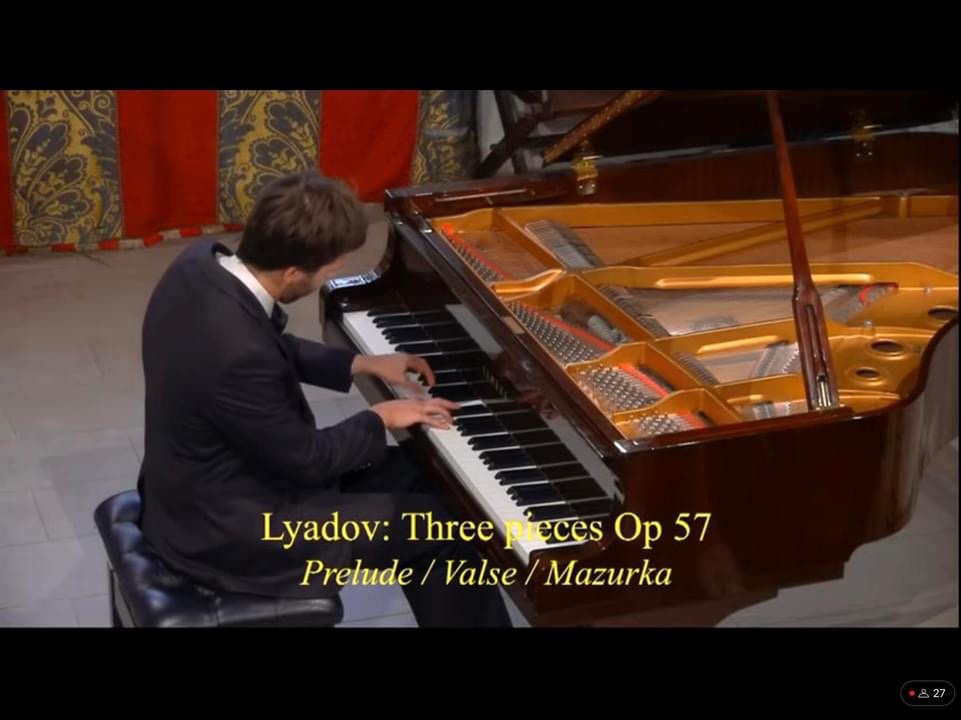
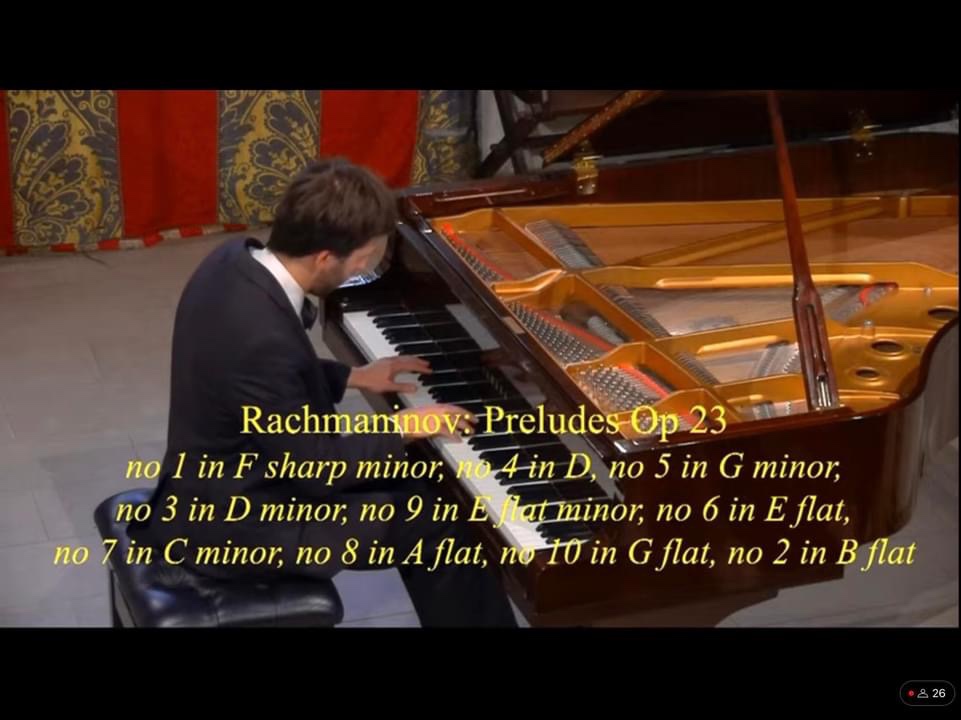
1900–1903 were difficult years for Rachmaninov and his motivation for writing the Preludes was predominantly financial.Composed in the Hotel America, financially dependent on his cousin Alexander Siloti, to whom the Preludes are dedicated.
The popular Prelude in C sharp minor op 3.n.2 perhaps unfairly eclipses the Op. 23 Preludes. Rachmaninov remarked, “…I think the Preludes of Op. 23 are far better music than my first Prelude, but the public has shown no disposition to share in my belief….”
The composer never played all of the Preludes in one sitting, preferring to cycle through a rotating mix of his favorites.There was a beautifully flowing tempo as the melodic lined duetted between the tenor and soprano registers in the first prelude .A bold melodic line was etched out in the beautiful D major prelude full of nobility and there was pure magic as the melodic line was embellished with a golden web of ravishing beauty above a sumptuous undercurrent of romantic sounds.The famous G minor prelude was played with deliberately beguiling capriciousness which contrasted so well with the aristocratic beauty of the mellifluous central episode.The excitement of the return of the march was enthralling but there was also an unexpected finesse to the phrasing as it just blew itself out so innocuously .The third in D minor was played with the capricious left hand melody answered by the solidity of the right hand chords with a deep sounding bass note that heralded a coda of magic discovery.The transcendental difficulties of the E flat minor prelude were disguised with such subtle phrasing and ‘will o’the wisp’ fleeting colours that was just as breathtaking as Liszt’s miniature tone poem.There was a ravishing melodic line of such fluidity in the E flat prelude as this most romantic of preludes just weaved it’s way into our hearts.There was such clarity in the mighty C minor prelude with its unrelenting rhythmic energy on which emerges the melodic line floating on this wave of busy weaving sounds with an even more exhilarating coda of sumptuous golden sounds.Strands of melody emerged out of the busy meanderings of the A flat prelude contrasting so well with the beauty of the melodic line of the tenth in G flat.Romantic sounds unfolded with such grace and beauty over the entire keyboard until the eruption of the second prelude in B flat.Transcendental playing of overwhelming romantic sounds like a call to arms before the sumptuous beauty of the central section where the melodic line emerges from an accompaniment spread over the entire keyboard.Fearless chords and cascades of notes brought this performance of the preludes op 23 to a brilliant conclusion.

An eclectic encore of a very moving performance with the sumptuously rich sounds of Brahms ‘Herzlich tut mich verlangen’op posth 122 in the richly embroidered version for piano by Busoni.The chorale preludes, not published until five years after his death, turned out to be Brahms’ last work. From one of the greatest composers of symphonies, chamber works, a requiem and more—a collection of short pieces that honour the past, reflect his own time, and continue to be re-interpreted today.Brahms wrote the 11 preludes in 1896 for organ,soon after the death of his dear friend, Clara Schumann. The short liturgical pieces, used to elaborate hymn tunes during a service, recall the music of J.S. Bach.
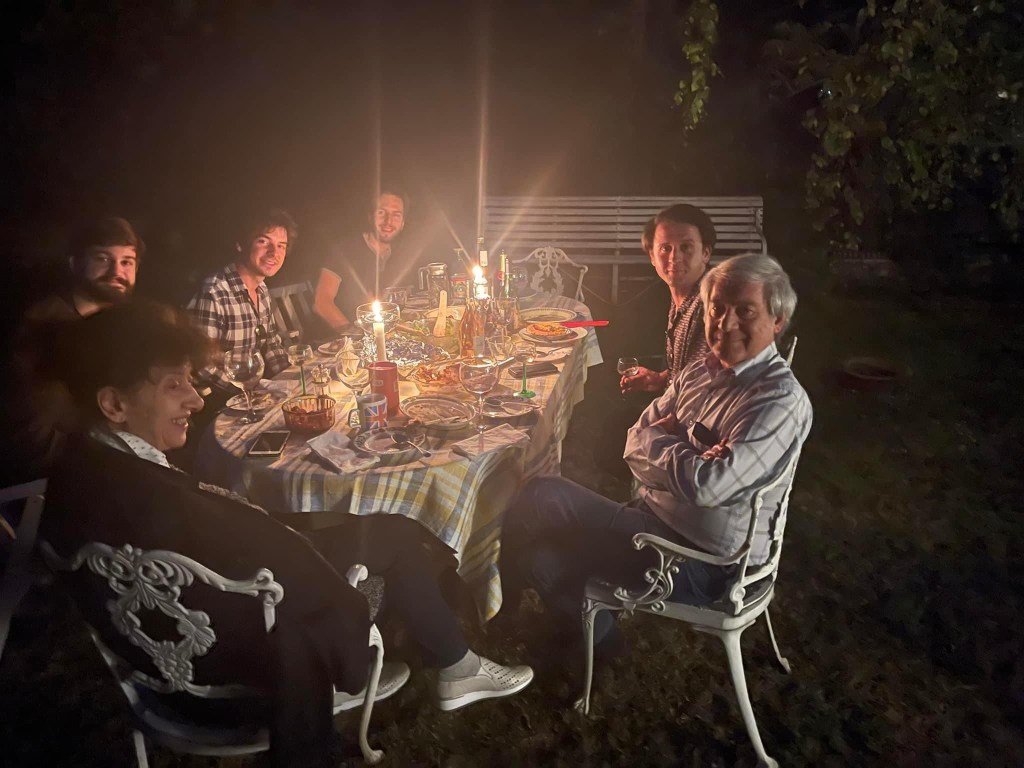
Damir is also an excellent cook and the magic he cooked up for his teacher Dmitri Alexeev and family the other day in my garden was the same magic that he cooked up today at the keyboard!
Music is life and life is music,just as the dedicated people of St Mary’s are showing us at least three times a week.
They say miracles do not happen twice in the same place ….well I know differently.
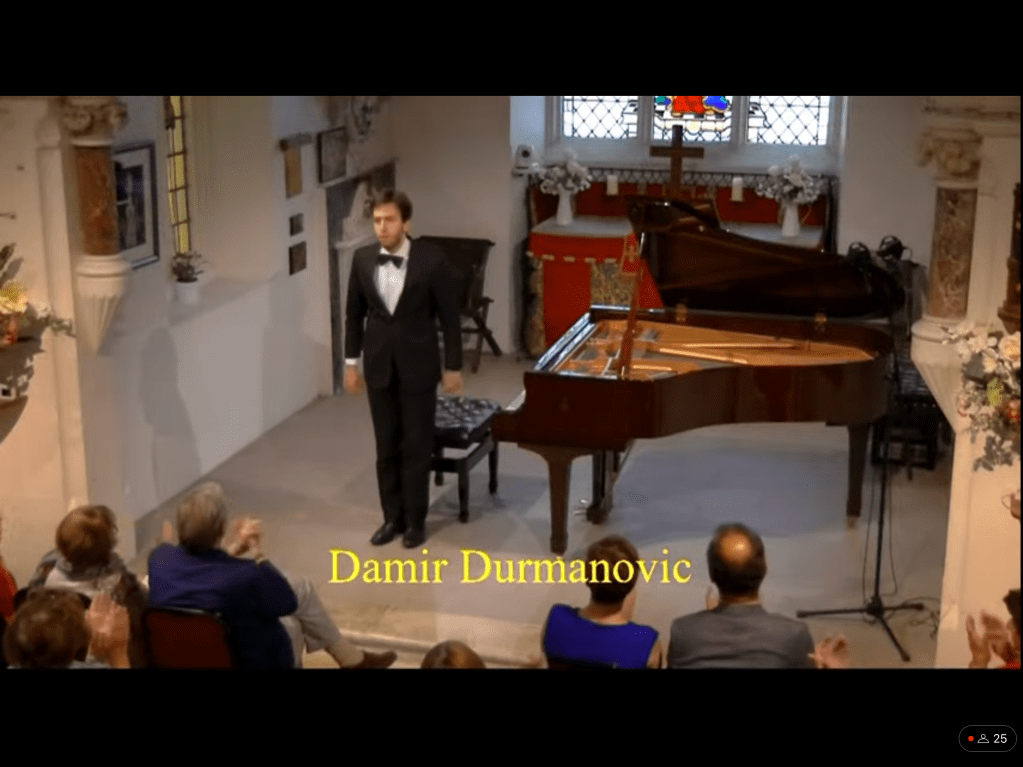
As an internationally sought-after performer, Damir Durmanovic has performed in venues and festivals including the Wigmore Hall, Champs Hill Studios, YPF Festival Amsterdam, Wimbledon Music Festival, Renia Sofia Audotorium Madrid, Gstaad Menuhin Festival, Derby Multifaith Center, Flusserei Flums, ‘Ballenlager’ Vaduz. He has won prizes in numerous international competitions including The Beethoven Intercollegiate Junior Competition in London, Adilia Alieva International Piano Competition in Geneva and Isidor Bajic International Piano Competition in Novi Sad. He has performed in masterclasses with Claudio Martinez-Mehner, Dmitri Bashkirov, Pascal Devoyon, Jacques Rouvier, Robert Levin, Jean-Bernard Pommier, Tatyana Sarkisova, and chamber ensembles such as the Emerson Quartet. Damir is also a scholar at the ‘Musikakademie Liechtestein’ and regularly participates in the courses organised by the academy. Damir began his studies at age of eight in his home country, Bosnia and Herzegovina, with Maja Azabagic before continuing his studies at the Yehudi Menuhin School where he studied with professor Marcel Baudet. He is an ABRSM scholar and is kindly supported by the Talent Unlimited Scheme. He is currently studying at the Royal College of Music in London with professor Dmitri Alexeev.

2 risposte a "Damir Durmanovic at St Mary’s stars shining brightly in Perivale today"